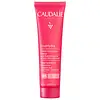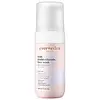What's inside
What's inside
 Key Ingredients
Key Ingredients

 Benefits
Benefits

 Concerns
Concerns

 Ingredients Side-by-side
Ingredients Side-by-side

Water
Skin ConditioningGlycerin
HumectantCoco-Caprylate/Caprate
EmollientSqualane
EmollientEthyl Oleate
EmollientCetearyl Alcohol
EmollientButyrospermum Parkii Butter Extract
Skin ConditioningVitis Vinifera Fruit Water
Skin ConditioningPotassium Cetyl Phosphate
EmulsifyingPalmitoyl Grape Seed Extract
Skin ConditioningCetearyl Wheat Straw Glycosides
EmulsifyingCetearyl Glucoside
EmulsifyingHydrogenated Castor Oil/Sebacic Acid Copolymer
EmollientHydrogenated Olive Oil Stearyl Esters
Emulsion StabilisingCarbomer
Emulsion StabilisingTocopheryl Acetate
AntioxidantCaprylyl Glycol
EmollientPotassium Sorbate
PreservativeHelianthus Annuus Seed Oil
EmollientSodium Hydroxide
BufferingTocopherol
AntioxidantVitis Vinifera Juice
AntioxidantCitric Acid
BufferingSodium Hyaluronate
HumectantSodium Benzoate
MaskingParfum
MaskingWater, Glycerin, Coco-Caprylate/Caprate, Squalane, Ethyl Oleate, Cetearyl Alcohol, Butyrospermum Parkii Butter Extract, Vitis Vinifera Fruit Water, Potassium Cetyl Phosphate, Palmitoyl Grape Seed Extract, Cetearyl Wheat Straw Glycosides, Cetearyl Glucoside, Hydrogenated Castor Oil/Sebacic Acid Copolymer, Hydrogenated Olive Oil Stearyl Esters, Carbomer, Tocopheryl Acetate, Caprylyl Glycol, Potassium Sorbate, Helianthus Annuus Seed Oil, Sodium Hydroxide, Tocopherol, Vitis Vinifera Juice, Citric Acid, Sodium Hyaluronate, Sodium Benzoate, Parfum
Water
Skin ConditioningCoco-Glucoside
CleansingGlycerin
HumectantDisodium Cocoyl Glutamate
Cleansing1,2-Hexanediol
Skin ConditioningSodium Lauroyl Oat Amino Acids
CleansingCocos Nucifera Oil
MaskingHydroxyacetophenone
AntioxidantHelianthus Annuus Extract
EmollientCocos Nucifera Fruit Juice
EmollientLactococcus Ferment Lysate
Skin ConditioningHydrogenated Lecithin
EmulsifyingPolyglyceryl-10 Stearate
Skin ConditioningCeramide NP
Skin ConditioningAscorbic Acid
AntioxidantLinoleic Acid
CleansingLinolenic Acid
CleansingHyaluronic Acid
HumectantInulin
Skin ConditioningFructose
HumectantPanthenol
Skin ConditioningNiacinamide
SmoothingSodium Gluconate
Skin ConditioningSodium Lactate
BufferingSucrose Stearate
EmollientCitric Acid
BufferingBenzoic Acid
MaskingParfum
MaskingWater, Coco-Glucoside, Glycerin, Disodium Cocoyl Glutamate, 1,2-Hexanediol, Sodium Lauroyl Oat Amino Acids, Cocos Nucifera Oil, Hydroxyacetophenone, Helianthus Annuus Extract, Cocos Nucifera Fruit Juice, Lactococcus Ferment Lysate, Hydrogenated Lecithin, Polyglyceryl-10 Stearate, Ceramide NP, Ascorbic Acid, Linoleic Acid, Linolenic Acid, Hyaluronic Acid, Inulin, Fructose, Panthenol, Niacinamide, Sodium Gluconate, Sodium Lactate, Sucrose Stearate, Citric Acid, Benzoic Acid, Parfum
Ingredients Explained
These ingredients are found in both products.
Ingredients higher up in an ingredient list are typically present in a larger amount.
Citric Acid is an alpha hydroxy acid (AHA) naturally found in citrus fruits like oranges, lemons, and limes.
Like other AHAs, citric acid can exfoliate skin by breaking down the bonds that hold dead skin cells together. This helps reveal smoother and brighter skin underneath.
However, this exfoliating effect only happens at high concentrations (20%) which can be hard to find in cosmetic products.
Due to this, citric acid is usually included in small amounts as a pH adjuster. This helps keep products slightly more acidic and compatible with skin's natural pH.
In skincare formulas, citric acid can:
While it can provide some skin benefits, research shows lactic acid and glycolic acid are generally more effective and less irritating exfoliants.
Most citric acid used in skincare today is made by fermenting sugars (usually from molasses). This synthetic version is identical to the natural citrus form but easier to stabilize and use in formulations.
Read more about some other popular AHA's here:
Learn more about Citric AcidGlycerin is already naturally found in your skin. It helps moisturize and protect your skin.
A study from 2016 found glycerin to be more effective as a humectant than AHAs and hyaluronic acid.
As a humectant, it helps the skin stay hydrated by pulling moisture to your skin. The low molecular weight of glycerin allows it to pull moisture into the deeper layers of your skin.
Hydrated skin improves your skin barrier; Your skin barrier helps protect against irritants and bacteria.
Glycerin has also been found to have antimicrobial and antiviral properties. Due to these properties, glycerin is often used in wound and burn treatments.
In cosmetics, glycerin is usually derived from plants such as soybean or palm. However, it can also be sourced from animals, such as tallow or animal fat.
This ingredient is organic, colorless, odorless, and non-toxic.
Glycerin is the name for this ingredient in American English. British English uses Glycerol/Glycerine.
Learn more about GlycerinParfum is a catch-all term for an ingredient or more that is used to give a scent to products.
Also called "fragrance", this ingredient can be a blend of hundreds of chemicals or plant oils. This means every product with "fragrance" or "parfum" in the ingredients list is a different mixture.
For instance, Habanolide is a proprietary trade name for a specific aroma chemical. When used as a fragrance ingredient in cosmetics, most aroma chemicals fall under the broad labeling category of “FRAGRANCE” or “PARFUM” according to EU and US regulations.
The term 'parfum' or 'fragrance' is not regulated in many countries. In many cases, it is up to the brand to define this term.
For instance, many brands choose to label themselves as "fragrance-free" because they are not using synthetic fragrances. However, their products may still contain ingredients such as essential oils that are considered a fragrance by INCI standards.
One example is Calendula flower extract. Calendula is an essential oil that still imparts a scent or 'fragrance'.
Depending on the blend, the ingredients in the mixture can cause allergies and sensitivities on the skin. Some ingredients that are known EU allergens include linalool and citronellol.
Parfum can also be used to mask or cover an unpleasant scent.
The bottom line is: not all fragrances/parfum/ingredients are created equally. If you are worried about fragrances, we recommend taking a closer look at an ingredient. And of course, we always recommend speaking with a professional.
Learn more about ParfumWater. It's the most common cosmetic ingredient of all. You'll usually see it at the top of ingredient lists, meaning that it makes up the largest part of the product.
So why is it so popular? Water most often acts as a solvent - this means that it helps dissolve other ingredients into the formulation.
You'll also recognize water as that liquid we all need to stay alive. If you see this, drink a glass of water. Stay hydrated!
Learn more about Water